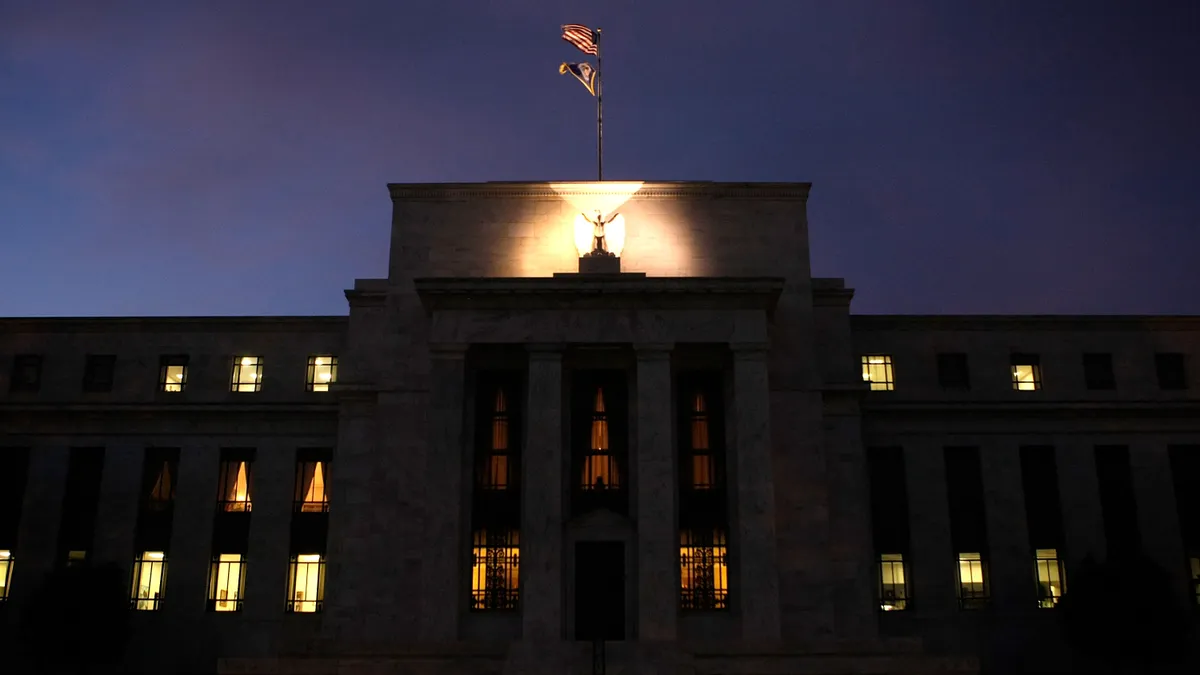Dive Brief:
- The U.S. economy during the past two months showed signs of modest growth, falling price pressures and a combination of decreasing hiring and high labor costs, the Federal Reserve said Wednesday in a survey of its 12 districts. Companies in many districts predict that wage growth will ease in the short term.
- “Contacts from most districts indicated economic growth was modest during July and August,” the central bank said, noting that a slowdown in retail spending persisted while consumer spending on tourism exceeded expectations.
- “Job growth was subdued across the nation,” the Fed said in its so-called Beige Book released two weeks before each meeting of its policymakers. “Though hiring slowed, most districts indicated imbalances persisted in the labor market as the availability of skilled workers and the number of applications remained constrained.”
Dive Insight:
Despite predictions of weakness, consumer spending and demand for labor have exceeded expectations in recent months, prompting Fed and other economists to abandon forecasts for a mild recession. Many analysts have recently marked up estimates for gross domestic product growth in 2023.
The Federal Open Market Committee, which will release economic projections after a Sept. 19-20 meeting, “is very likely going to have to raise, maybe even double, its GDP forecast,” Julia Coronado, president of the National Association for Business Economics, said during a webcast on Wednesday. Fed officials in June forecast just 1% GDP growth in 2023, based on a median projection.
The Atlanta Fed forecast on Wednesday that the economy will grow at a 5.6% annual rate during the third quarter, increasing its estimate from 3.9% on Aug. 1.
“Predictions of an imminent demise in the U.S. economy are greatly exaggerated,” former St. Louis Fed President James Bullard said Wednesday, while calling the Atlanta Fed forecast “ridiculously high.”
“The basic story is that it looks like the second half 2023 GDP growth will be above trend on top of a first half that surprised to the upside,” according to Bullard, who left the Fed last month to become dean of Purdue University’s Business School.
The central bank’s most aggressive pace of monetary tightening in four decades — pushing up the federal funds rate to the highest level in 22 years — will likely achieve a “soft landing,” or reduce inflation to the central bank’s 2% target without triggering a recession or widespread unemployment, Bullard predicted.
“The thing that the Fed does not whisper, but I’ll whisper here, is this looks like a ‘soft landing,’” Bullard said, noting an easing of inflation during the past year and August unemployment of just 3.8%.
“But of course, if you’re making policy, you have to be very careful — the data can get revised,” he said during the NABE webinar.
Boston Fed President Susan Collins on Wednesday also cautioned that the central bank may not have decisively reversed a surge in price pressures that started in early 2021.
“I expect we’ll need to hold rates at restrictive levels for some time,” Collins said in a speech. “And while we may be near, or even at, the peak for policy rates, further tightening could be warranted, depending on the incoming data.”
Fed policymakers in economic projections scheduled for release on Sept. 20 should keep signaling a likelihood for one more quarter-point rate increase this year in case inflation rebounds, Bullard said.
“It’s probably wise from a risk-management perspective — and probably necessary based on the data that we’ve gotten — that they keep that extra rate hike in there,” Bullard said. “That way if they get past September and they get a bad inflation report or something, they can react to that without having promised, ‘Hey, we’re never going to raise rates ever again.’”
Price gains have eased in many Fed regions, according to the Beige Book, which is based on anecdotal information.
“Most districts reported price growth slowed overall, decelerating faster in manufacturing and consumer goods sectors,” according to the survey, which is based on information gathered on or before Aug. 28.













